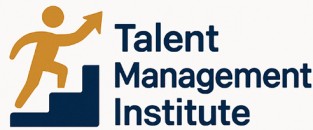
Defining Schedule Variance
Demystifying Schedule Variance: A Key Metric in Talent Management
In the realm of talent management, understanding and leveraging schedule variance can significantly enhance organizational performance. Schedule variance in its essence is a metric used in project management to measure the difference between the planned and actual progress. Essentially, it highlights whether a project is ahead or behind its set time schedule. At its core, schedule variance aids project managers by providing insights into project performance. This measurement sheds light on how well teams are utilizing their resources and whether they are meeting key milestones. The formula used to calculate schedule variance is relatively straightforward: it is the difference between the earned value (cost work completed) and the planned value (budgeted cost). The result is typically expressed as a percentage, making it easier to track project progress. What makes schedule variance particularly vital in talent management is how it affects the allocation and management of human resources. A negative schedule indicates a project is falling behind, which might suggest that additional resources or time management strategies are required. On the flip side, a positive schedule variance indicates the project is ahead, allowing managers to optimize resources or reallocate them to other projects in need. Understanding the nuances of schedule variance can greatly influence talent management strategies. It equips managers with critical data necessary to make informed decisions about workforce management, cost allocation, and timeline adjustments. For a more in-depth exploration of how effective talent management can improve organizational performance, you can read through this insightful article on enhancing organizational performance through effective talent management.Impact of Schedule Variance on Talent Management
Consequences of Deviating from the Project Timeline
Schedule variance holds a critical place in the realm of talent management, deeply affecting how projects and teams operate. It is not merely a theoretical concept, but a practical issue that managers encounter regularly. When a project deviates from its planned schedule, the implications are manifold and can ripple across the entire scope of the endeavor.- Project Progress Disruption: As schedule variance indicates the difference between work planned and work completed, any significant divergence can disrupt project progress. This misalignment may lead to resource bottlenecking, with some team members working ahead of schedule, while others are delayed, leading to an imbalance in workflow.
- Cost Implications: Planned cost and earned cost can be negatively impacted by unexpected schedule variances. Projects falling behind schedule may require additional resources or overtime to catch up, thereby inflating the budgeted cost, while projects moving ahead too quickly might demand unexpected resource allocation adjustments.
- Impact on Performance: The performance of both the project and the team can suffer due to unresolved schedule variances. Negative schedule and budget impacts can demoralize staff, create undue pressure, and reduce the quality of outcomes, negatively influencing overall schedule performance.
Strategies to Manage Schedule Variance
Effective Approaches to Mitigate Schedule Variance
Managing schedule variance in talent management is crucial for keeping projects on track and ensuring resources are used efficiently. Here are some strategic approaches project managers can employ to manage and mitigate schedule variance:- Frequent Tracking and Monitoring: Regular monitoring of the project schedule allows managers to identify any variances at an early stage. By keeping a close eye on the progress of the project, project managers can take timely corrective actions, preventing the variance from escalating further.
- Implementing a Robust Schedule Variance Formula: Calculating schedule variance using a reliable formula helps in determining the extent of variance as a percentage of planned work. This calculation enables managers to assess the negative schedule impact effectively and adapt strategies accordingly.
- Utilizing Technology Tools: Project management software provides advanced tools for tracking and analyzing variance. These platforms offer features that allow managers to keep track of cost and work completed, ensuring that the project stays within budget and on track with the planned schedule.
- Resource Allocation Optimization: Efficient allocation of resources is critical. Managers should ensure that the right number of team members with appropriate skill sets are assigned to tasks. This not only helps in keeping the project ahead of schedule but also optimizes the cost of work needed to meet project goals.
- Planning for Contingencies: By anticipating potential delays and having contingency plans in place, managers can address unexpected issues without causing major disruptions. This preparation helps maintain schedule performance even when unforeseen challenges arise.
- Regular Communication: Keeping open lines of communication with all stakeholders about project progress enhances trust and collaboration, allowing for adjustments to be made in a timely manner to minimize schedule variances.
Case Studies: Real-World Examples
Examining Real-World Scenarios in Schedule Variance
In an effort to delve deeper into the concept of schedule variance, let’s take a look at some real-world examples that help to underscore its critical role in talent management and project oversight. Real-world scenarios can vividly illustrate how project managers utilize this metric to steer their projects and resources more efficiently. One notable example can be found in the construction industry. Construction projects often grapple with schedule variance due to unforeseen delays caused by weather conditions, labor shortages, or material delivery issues. Here, good management practices can determine the project progress and identify negative schedule variances early using the variance formula. By calculating the percentage difference between planned progress and actual progress, managers can make timely decisions to bring the project back on track. These decisions might include redistributing resources, adjusting work schedules, or revising budgets. In the software development sector, schedule variance takes center stage in agile project management frameworks. Agile projects are marked by short development cycles and iterative improvements, where staying ahead of schedule is paramount. Monitoring the variance percentage closely helps teams to ensure their sprints are completed according to the initial project schedule and avoid cost overruns. This proactive handling of variance allows project managers to align their efforts and maintain steady progress throughout the development lifecycle. Moreover, in the retail sector during peak seasons, retailers must track schedule variances to handle fluctuations in demand. By anticipating ahead schedule needs, businesses can adjust their staffing and inventory. This agile project management approach helps them keep variance schedule under control and enables better-earned management overall. Analyzing these examples reveals the vital role of schedule variance in illustrating how projects can either stay on course or veer off track. Embracing this variance as a tool rather than a setback, organizations can accurately calculate schedule variance and apply corrective measures effectively to uphold their project goals.Tools and Technologies for Monitoring Schedule Variance
Technological Aids in Mastering Schedule Variance
Monitoring schedule variance in talent management can be significantly bolstered by utilizing various tools and technologies that help keep projects on track. These tools assist managers in calculating variance, tracking progress, and adjusting plans where necessary to ensure optimal performance. One crucial tool in monitoring schedule variance is project management software. These platforms often come equipped with features that automatically calculate variance percentages and offer insights into the schedule's performance. By using these tools, project managers can quickly determine whether a project is ahead or lagging behind the planned schedule. The system provides comprehensive data, such as the budgeted cost of work scheduled versus the actual cost of work performed, helping managers adjust resources accordingly. Moreover, technologies such as earned value management software prove invaluable by allowing organizations to calculate the schedule variance formula down to minute details. These systems not only track project progress but also help to mitigate potential cost overruns. They offer real-time analytics, making it easier to spot negative schedule variances and take prompt corrective actions. Cloud-based platforms have further enhanced how managers oversee schedules by offering access to real-time data from anywhere. This aids in seamless communication and collaboration among teams, keeping everyone informed about performance metrics and required adjustments. Other advanced tools that assist in tracking and analyzing variance schedules include dashboards that visualize project timelines, providing a clear view of work completed versus planned activities. These dashboards enable managers to see at a glance how efficiently a project is progressing and whether it's staying within its allocated budget. Incorporating these tools not only makes tracking and management of variances more effective but also fosters agile decision-making. By staying updated on project statuses, organizations can make informed adjustments, essentially keeping projects on a course that aligns with strategic goals.Future Trends in Schedule Variance and Talent Management
Emerging Trends in Addressing Schedule Variance in the Workforce
Schedule variance continues to be a critical consideration as organizations increasingly recognize its impact on project efficiency and cost management. Planning for the future, there are several trends that managers and project professionals should be aware of in order to effectively manage and address schedule variances.
- Advanced Predictive Analytics: Leveraging advanced analytics and big data can assist managers in predicting potential project schedule delays before they occur. By analyzing past project data, managers can refine their strategies and improve accuracy in forecasting to mitigate risks of going off track.
- Increased Collaboration Tools: The reliance on digital project management tools continues to rise, offering teams improved communication and shared worker insights. Tools that facilitate real-time updates on schedule performance help managers keep an eye on potential variances and make quick decisions if required.
- Adoption of Agile Workflows: The adoption of agile project management methodologies allows teams to adapt quickly to changes by promoting incremental work processes over lengthy planning phases. This flexibility can help in addressing variances as they arise, keeping the project on schedule.
- Resource Optimization: Companies are increasingly focusing on maximizing resource allocation to save time and reduce costs. Using resource management software, managers can ensure that talents are utilized efficiently, minimizing the negative impacts that resource shortages could have on project schedules.
- Integration of AI and Machine Learning: AI and machine learning are being used to simulate different project scenarios and predict outcomes. These technologies help in recognizing patterns that can lead to schedule variances and offer insights for effective intervention strategies.
Being aware of these trends and leveraging innovative solutions not only aids in improving schedule performance but also enhances earned management capabilities. As organizations continue to refine their strategies, the potential for positive schedule variance increases, ensuring that projects are delivered on time and within budgeted cost. By keeping track of these advancements, project managers can play a key role in driving progress and optimizing performance.













